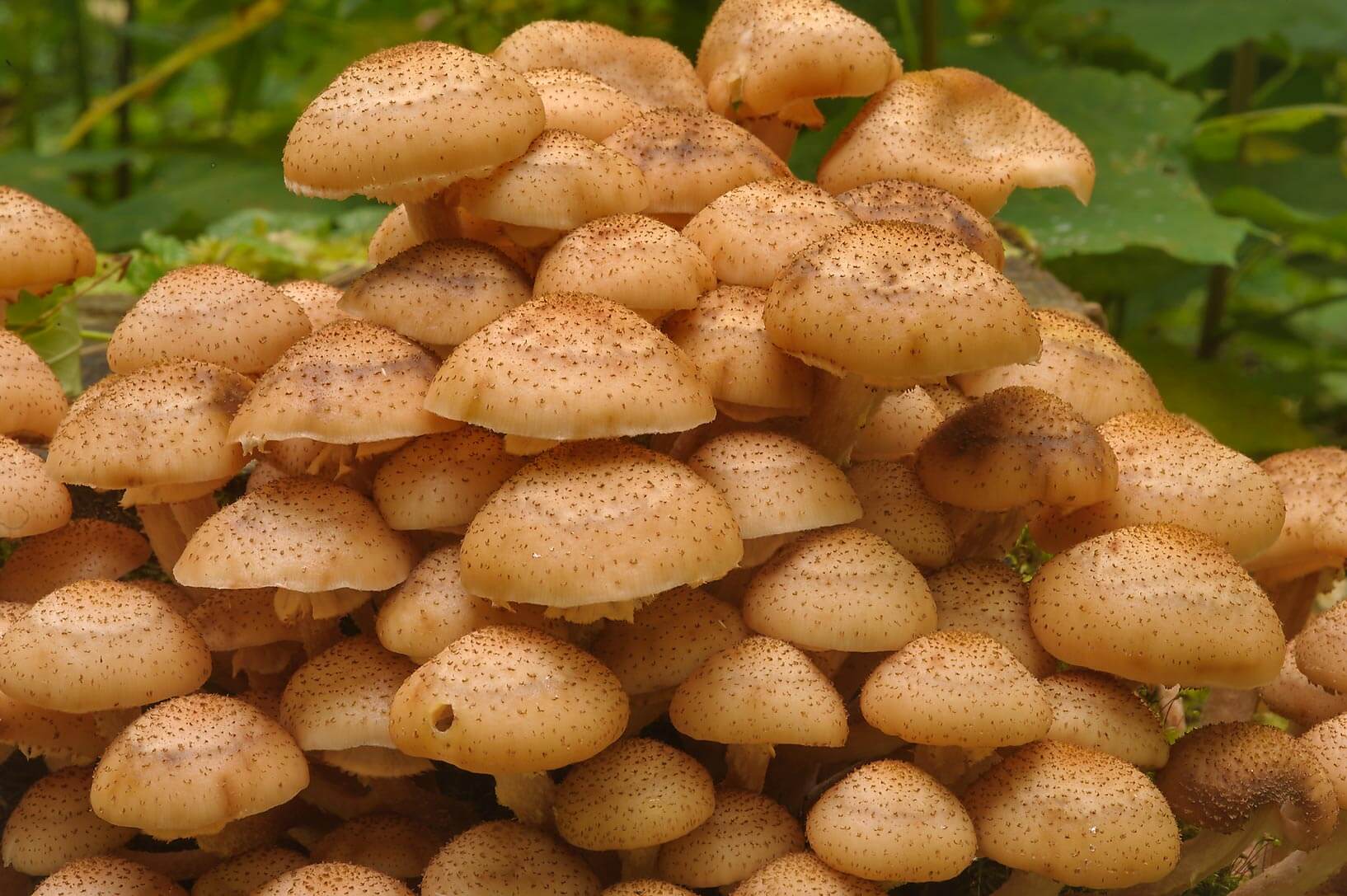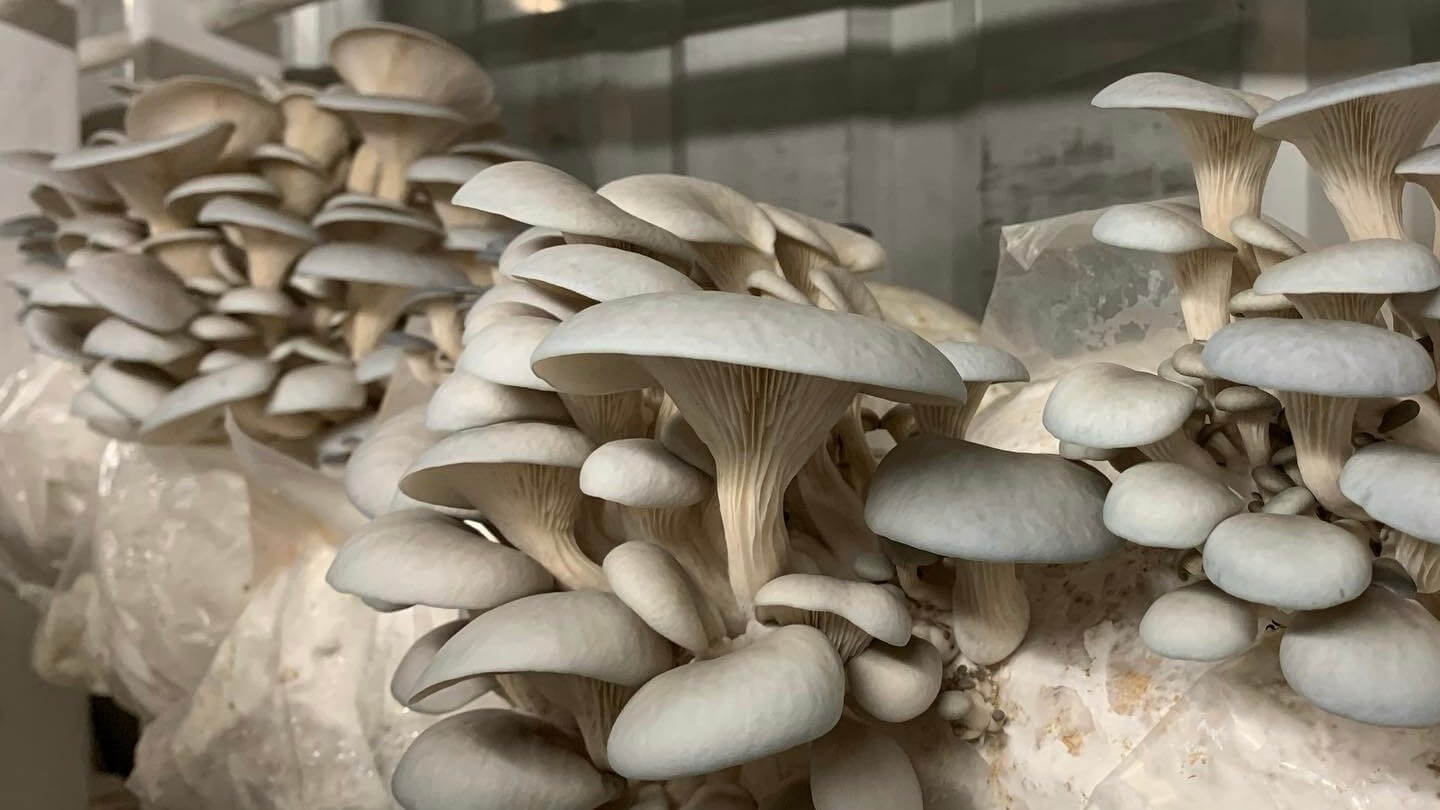Every once in a while, a mushroom story emerges that is so extraordinary, it almost defies belief. The story of the Honey mushroom (Armillaria gallica) are one of those stories.
Imagine a single mushroom colony covering nearly 70 football fields, weighing more than a full-grown blue whale, and thriving quietly for over 2,500 years.
This isn't science fiction; it's the remarkable reality of the "humongous fungus," a colony of honey mushrooms, growing in Michigan.
Table of Contents
 Honey mushrooms growing in the wild.
Honey mushrooms growing in the wild.The Ancient Colony
This particular mushroom colony has been flourishing since long before the Roman Empire, the birth of Jesus, and even predates modern civilization as we know it.
The sheer scale and longevity of this fungal network are a testament to the resilience and adaptability of fungi in our ecosystems.
The "humongous fungus" has earned its nickname not just for its size but also for its ability to persist through millennia, quietly shaping the environment around it.
A Historical Perspective
To put the age of this mushroom colony into perspective, consider the historical events that have occurred during its lifespan.
The colony was already well-established when ancient civilizations like the Egyptians and Greeks were at their peak.
It has witnessed the rise and fall of empires, the evolution of human societies, and the dramatic changes in the Earth's climate.
This longevity highlights the incredible adaptability and resilience of fungi, which often go unnoticed despite their crucial role in ecosystems.
What Makes Armillaria gallica So Impressive?
Beyond its colossal size, the Armillaria gallica mushroom boasts unique traits that make it a marvel in the fungal world.
Here's why this mushroom deserves a spot in your knowledge toolkit:
Soil Guardian
Despite its somewhat eerie reputation, Armillaria gallica plays a crucial role in ecosystems.
It is a powerful decomposer, breaking down fallen wood and forest debris, transforming it into rich, organic soil.
For natural composting enthusiasts, this mushroom is an invaluable ally. Its ability to recycle nutrients back into the soil supports the growth of plants and other organisms, contributing to the overall health of the ecosystem.
The Role of Decomposers
Decomposers like Armillaria gallica are essential for nutrient cycling in forests. They break down dead organic matter, releasing nutrients that would otherwise be locked away.
This process enriches the soil, promoting the growth of new plants and supporting the diverse web of life in the forest. The honey mushroom's role as a decomposer is a testament to the interconnectedness of nature, where every organism plays a part in maintaining the balance of the ecosystem.
Architect of the Underworld
Honey mushrooms spread using tough strands called rhizomorphs, which resemble tangled bootlaces or thick, knotted ropes.
These rhizomorphs stretch out underground, creating a vast web that feeds the fungus and helps stabilize soil. Think of them as the fiber-optic cables of the forest, carrying nutrients and water through the ecosystem and creating cozy nooks for other tiny organisms.
The Structure of Rhizomorphs
Rhizomorphs are specialized structures that allow Armillaria gallica to explore its environment and seek out new resources.
They are composed of densely packed hyphae, the thread-like structures that make up the mycelium. Rhizomorphs can grow through soil and decaying wood, forming a network that can span vast distances.
This network not only supports the growth of the fungus but also contributes to the stability of the soil, preventing erosion and promoting the growth of plant roots.
 Rhizomorph strands forming in hardwood substrate.
Rhizomorph strands forming in hardwood substrate.Medicinal Potential
While not yet a health-food celebrity, the honey mushroom shows promise in the wellness realm.
Studies suggest it contains antioxidants that could have immune-supporting effects. Perhaps one day, honey mushrooms will join the ranks of Lion’s Mane and Reishi on health food shelves.
Exploring the Health Benefits
The potential health benefits of the honey mushroom are an exciting area of research. Antioxidants are compounds that protect cells from damage caused by harmful molecules called free radicals.
By consuming foods rich in antioxidants, we can support our immune system and reduce the risk of chronic diseases. While more research is needed to fully understand the medicinal potential of the honey mushroom, its antioxidant properties make it a promising candidate for further study.
Cultivating Honey Mushrooms
You don't need 70 football fields to cultivate your own Armillaria gallica.
With the right setup, growing a small patch can be both doable and rewarding. Here's how to get started:
Substrate & Setup
Honey mushrooms thrive on hardwood sawdust or woodchips, especially in shady outdoor spots or controlled indoor environments.
Keep the substrate cool and moist, and be patient—this isn't the fastest-growing mushroom. But watching those rhizomorphs snake out and claim their territory is oddly thrilling.
Choosing the Right Substrate
The substrate is the material on which the mushroom grows. For honey mushrooms, hardwood sawdust or woodchips are ideal because they mimic the natural environment in which the fungus thrives.
The substrate should be kept cool and moist to support the growth of the mycelium. It's important to monitor the moisture levels carefully, as too much or too little water can hinder the growth of the mushrooms.
Harvesting & Cooking
Once your honey mushrooms are ready, sauté them to mellow out any bitterness.
They offer an earthy, satisfying flavor, and knowing you're enjoying a mushroom that could outlast civilization adds a unique twist to your meal.
Preparing Honey Mushrooms
When harvesting honey mushrooms, it's important to handle them gently to avoid damaging the delicate caps.
Once harvested, the mushrooms should be cleaned to remove any dirt or debris.
To cook honey mushrooms, sauté them in a pan with a bit of oil until they are tender and the bitterness has mellowed out. They can be used in a variety of dishes, from stir-fries to soups, adding a rich, earthy flavor to your meals.
The Environmental Impact of Armillaria gallica
The honey mushroom's role as a decomposer and soil stabilizer has significant implications for the environment.
By breaking down dead organic matter, it contributes to the cycling of nutrients in the ecosystem.
This process is essential for the health of forests, as it supports the growth of new plants and helps to maintain the diversity of the ecosystem.
The Importance of Fungi in Ecosystems
Fungi play a crucial role in ecosystems, yet they often go unnoticed and underappreciated.
They are responsible for the decomposition of organic matter, the cycling of nutrients, and the formation of symbiotic relationships with plants.
The honey mushroom is a prime example of the importance of fungi in maintaining the health and balance of ecosystems.
The Future of the Honey Mushroom
As our understanding of Armillaria gallica and its unique characteristics continues to grow, so too does our appreciation for its role in the environment.
Research into its medicinal potential and cultivation techniques is ongoing, and there is much still to be discovered about this fascinating fungus.
Research and Conservation
Efforts to study and conserve the honey mushroom are essential for ensuring its continued role in ecosystems.
Researchers are working to better understand its growth habits, medicinal properties, and environmental impacts. Conservation efforts focus on protecting the habitats in which Armillaria gallica, ensuring that it can continue to play its vital role in the ecosystem.
Conclusion
The story of the humongous fungus is just the beginning. As we delve deeper into the world of Armillaria gallica, we uncover a fascinating organism that plays a vital role in our ecosystems.
Whether you're interested in cultivating your own Armillaria gallica or simply appreciating their natural wonders, there's always more to discover.
If you're eager to try cultivating honey mushrooms, check out our liquid culture available in the shop.
And who knows? With enough interest, we might even introduce a grow kit for this remarkable fungus.
Honey mushroom liquid culture

€29,00
One syringe containing 20 ml of Honey mushroom (Armillaria gallica) liquid culture + one sterile needle.You can use one syringe to knock up two bags of sterilised rye grains! Liquid culture is living mushroom mycelium that is suspended in a sterile… read more






